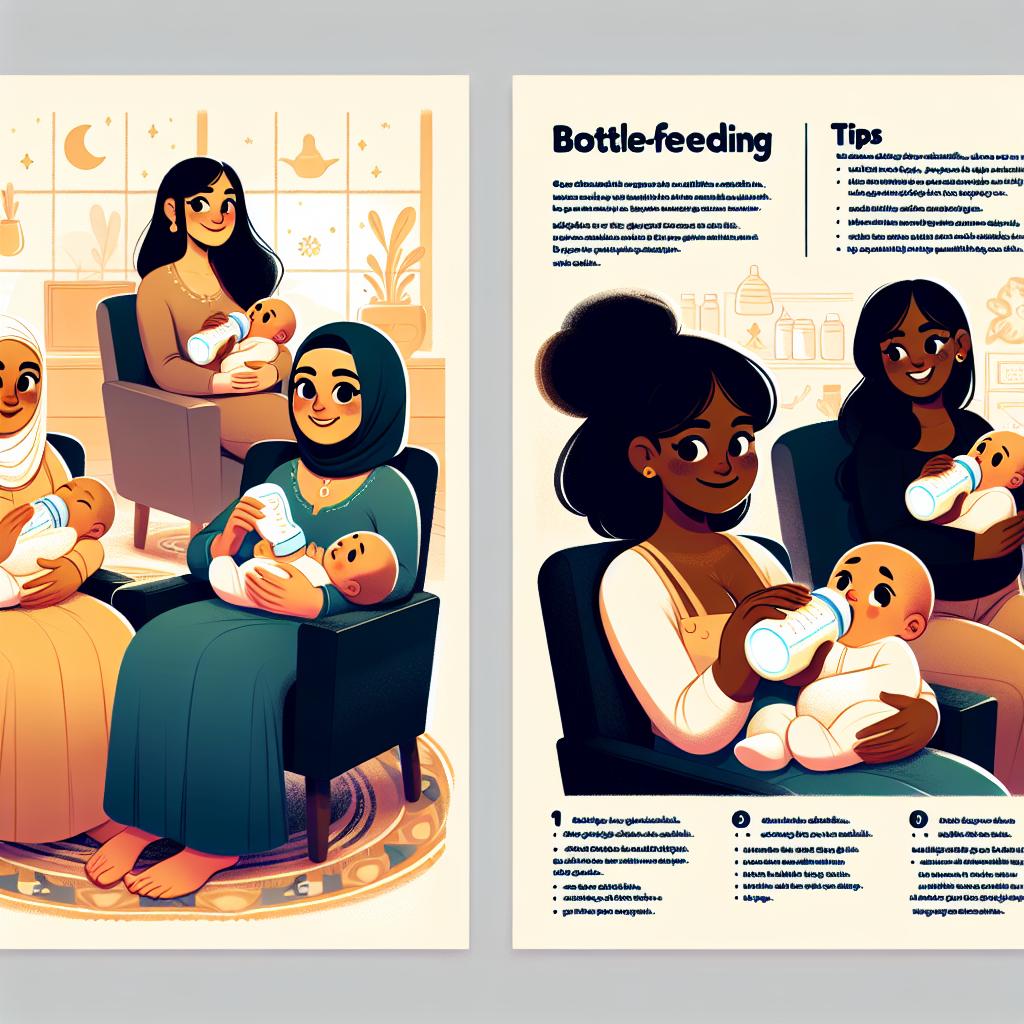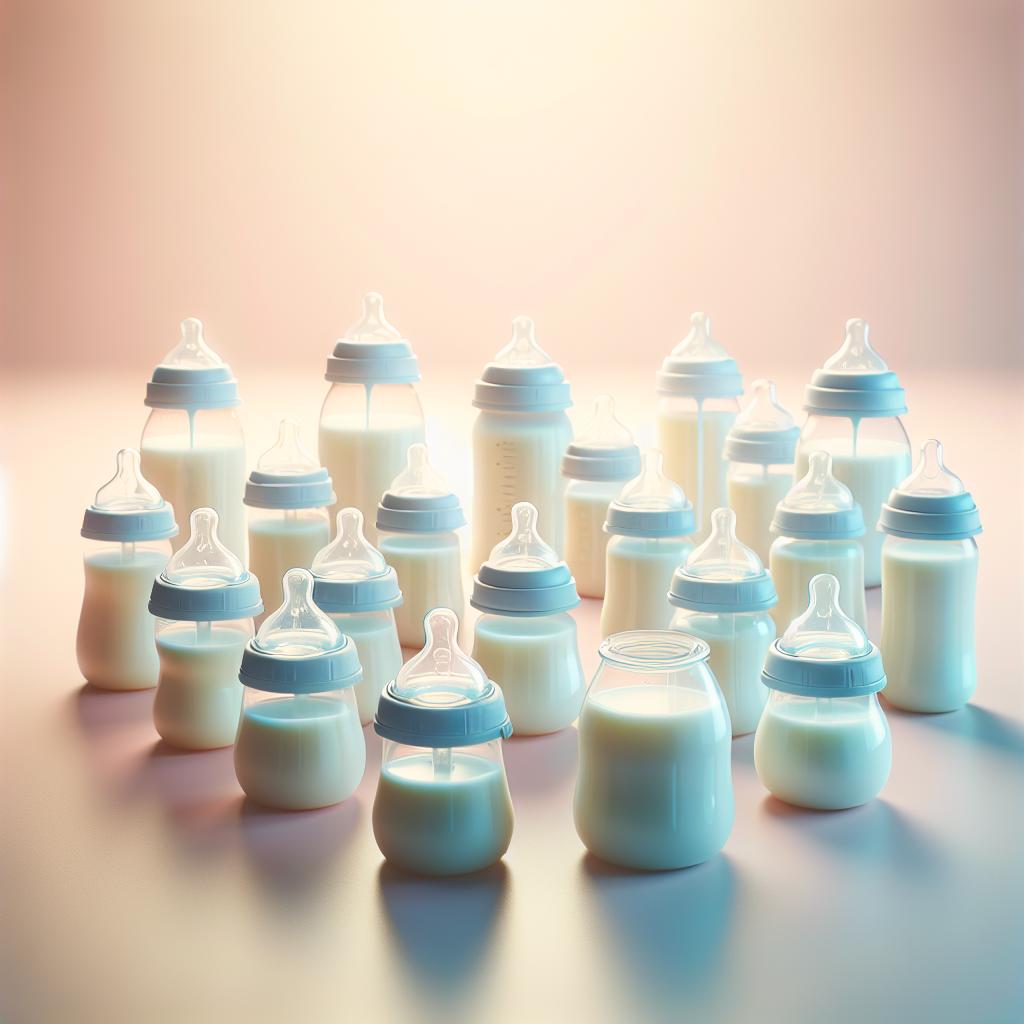Understanding Your Baby’s Hunger Cues
Feeding is one of the very first ways we bond with our newborns, and it can be a beautiful, albeit challenging, experience for any new mom. One of the essential new mom tips for successful bottle feeding is understanding your baby’s hunger cues. Look for signs such as restlessness, increased movement, and sucking motions. These cues indicate that your baby is ready to feed.
The Importance of the Right Bottle
Selecting a suitable bottle is crucial for a smooth bottle-feeding experience. Bottles come in a range of shapes, sizes, and materials, and choosing the right one can drastically affect how your baby adapts to bottle feeding. It’s recommended to choose gentle bottles that mimic the breastfeeding experience for easier transitions.
Creating a Comfortable Environment
The environment in which you feed your baby can significantly impact their feeding experience. A quiet, soothing environment can help your baby remain calm and receptive to feeding. It can also be beneficial to hold your baby close during feeding; this promotes a sense of security and comfort and aids in bonding with your baby. Check out this blog for more tips on comforting your baby during bottle feeding.
Combining Breastfeeding and Bottle Feeding
For many new moms, combining breastfeeding and bottle feeding – also known as mixed feeding – can offer the best of both worlds. This method not only allows moms to continue the intimate bonding experience of breastfeeding but also gives them the flexibility of bottle feeding when needed.
Here are some key points to consider:
- Introduce the bottle after breastfeeding has been established
- Choose a bottle that mimics the breast to avoid nipple confusion
- Include breastfeeding as part of your routine even when predominantly bottle feeding to maintain your milk supply
How to Get Your Baby to Love the Bottle
Some babies take to the bottle easily, while others may need a little more encouragement. Experiment with different bottle nipples, as nipple flow and shape can make a significant difference to how easily your baby takes to the bottle. Consistency is also key. Consider using a methodical approach to help your baby become more accustomed to bottle feeding.
Remember, patience is key when it comes to bottle feeding new moms. It’s a new experience for both you and your baby, and there will be a learning curve. Don’t hesitate to seek advice and guidance – every mother’s journey is unique, and sometimes a little support can go a long way.
Feeding Frequency for Bottle Feeding New Moms
The frequency of feeding varies for each baby depending on their age, weight, and personal feeding habits. During the first week, you may find that your baby would want to feed every 2-3 hours or more. You could follow an on-demand feeding schedule, feeding your baby whenever they show signs of hunger. As your baby grows, they will gradually start having longer periods of sleep and may extend the duration between feeds. Visit the CDC’s information on infant and toddler nutrition for more information.
Quantity of Milk Per Feed
In the early days, your newborn’s stomach is tiny, they can only take small amounts of milk at each feed. Gradually adjust the volume of each feed as your baby grows. Overfeeding can result in discomfort and vomiting. Underfeeding, on the other hand, can lead to slowed growth and undernourishment. Treading the line between these two extremes is critical. You should always follow your pediatrician’s advice regarding feeding quantities.
Cleanliness and Hygiene
Ensuring your bottle-feeding equipment is clean and sterilized is of utmost importance. Any bacteria that may contaminate the milk may be harmful to your newborn, whose immune system is still developing. Always clean and sterilize the bottles, nipples, rings, and caps before each use. Here are some useful bottle-feeding advice and tips on cleanliness and hygiene.
Correct Bottle-Feeding Position
Holding your baby in the correct position is crucial when bottle feeding. Ensure that your baby is sitting somewhat upright and that the bottle is tilted enough for the milk to fill the nipple completely. This prevents your baby from swallowing air, which can cause discomfort and gas. Check out this baby advice for new moms for tips on ideal feeding positions.
Formula Feeding
If you’re not breastfeeding, formula feeding can be a practical option. There is a wide variety of baby formulas available in the market, each catering to different needs. Your choice should be based on your babies needs and your pediatrician’s advice. Learn more about formula feeding and how to choose the right one for your baby.
Your Well-being Matters Too!
Becoming a new mom is demanding, both physically and emotionally. While it’s crucial to ensure your baby is getting the care and nutrition they need, it’s equally important to take care of yourself as well. Ensure you’re well-rested, stay hydrated, and eat nutritious meals to keep your energy levels high.
Remember, it’s okay to ask for help and take regular breaks. After all, a happy and healthy mom equals a happy baby!
Remember that every baby is unique; what works wonderfully for one baby might not work at all for another. Continue to experiment, learn, and grow along with your baby. You are doing a brilliant job, mama!






